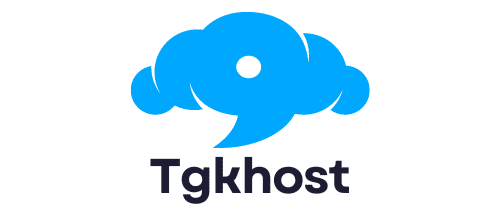What are the best practices for setting up a remote desktop environment using a Dell PowerEdge T40 server?

As your business grows, you may find that managing your data and applications on individual devices becomes increasingly impractical. This is where remote desktop solutions, like those provided by a Dell PowerEdge T40 server, come into the picture. A remote desktop environment offers a centralized way to manage your business's digital assets, allowing you to quickly scale your IT infrastructure as your needs evolve.
Setting up a remote desktop environment effectively can be a complex process. However, with the right guidance, you can establish a secure and efficient system that can serve your business's needs today and for years to come.
Sujet a lire : What are the steps to set up a high-performance gaming setup using a Custom Loop Hard Tube Liquid Cooling system?
Understanding the Basics of Dell PowerEdge T40 Server
To begin with, let's familiarize ourselves with the Dell PowerEdge T40 server - a piece of hardware that can act as the backbone of your remote desktop environment. The PowerEdge T40 is a part of Dell's PowerEdge server line, renowned for its reliability and scalability.
The T40 model is an entry-level server, designed with small businesses in mind. It offers a balance between performance and cost, making it an excellent option for businesses that are starting to explore server-based solutions. The T40 server comes with an Intel Xeon E-2224G processor, 8GB of memory, and 1TB of storage. This hardware configuration is more than capable of handling a small remote desktop environment.
Lire également : How can you configure an HP Z2 G5 Tower for optimal performance in running virtual machines?
One of the key features of the PowerEdge T40 is its iDRAC (Integrated Dell Remote Access Controller) feature. iDRAC is a hardware-based system management technology that provides remote access to the server, offering a wealth of features to help you manage, troubleshoot, and update your server from anywhere in the world.
Planning and Preparation
Before getting your hands dirty with the setup process, some groundwork needs to be laid. Like any significant IT project, setting up a remote desktop environment requires careful planning and preparation.
For starters, you need to decide on the operating system you are going to use. While the PowerEdge T40 server supports various operating systems, including Windows Server and various Linux distributions, for the purpose of this article, we're going to focus on using Windows Server, given its widespread usage and robust support for remote desktop services.
You'll also need to plan your network configuration. Take into account the number of users who will be accessing the remote desktop environment, and the type of data and applications they will be using. Remember that the remote desktop environment will be reliant on your network's bandwidth, so it's essential to ensure your network infrastructure can handle the load.
Setting up Windows Server on Dell PowerEdge T40 Server
Once you have a clear understanding of your needs and the resources at your disposal, you can begin setting up your server. The initial setup involves installing Windows Server on your Dell PowerEdge T40.
Microsoft provides step-by-step instructions on how to install Windows Server. Keep in mind that you will need a valid license to use Windows Server. Once you've installed the operating system, ensure to update it with the latest security patches and updates.
After setting up the operating system, you'll need to configure your server according to your needs. You'll need to set up user accounts, permissions, and storage configurations. This is also the time to set up any specific applications your business requires.
Configuring Remote Desktop Services
With Windows Server installed and configured, you can now turn your attention to setting up Remote Desktop Services. This feature allows users to access a virtual desktop over the internet, enabling them to work from anywhere.
Within the Server Manager dashboard on Windows Server, you can add the Remote Desktop Services role. There are several role services you can choose from, but for a basic remote desktop environment, you'll need the following:
- RD Session Host: This role service handles the core functionality of Remote Desktop Services, allowing users to connect and run programs on the server.
- RD Licensing: This role service manages the licenses required by connected users.
- RD Gateway: This role service enables users to connect to the remote desktop environment over the internet securely.
After adding these role services, you'll need to configure them according to your needs. Remember to set up security measures, such as firewalls and encryption, to protect your data and system.
Leveraging Dell's iDRAC for Server Management
As previously mentioned, the Dell PowerEdge T40 server comes with the iDRAC feature, providing you with a robust tool for server management. Using iDRAC, you can monitor your server's performance, update firmware and software, and troubleshoot issues, all from a convenient web-based interface.
To access iDRAC, you need to configure it on your server first. This process involves setting up an IP address for the iDRAC interface, and creating a username and password. Once iDRAC is set up, you can access it by entering the IP address into a web browser on a network-connected device.
In terms of best practices for using iDRAC, it's crucial to keep it updated with the latest firmware version to ensure you're benefiting from the most recent features and security updates. It's also advisable to regularly monitor your server's performance using iDRAC, allowing you to identify and resolve potential issues before they become significant problems.
Optimal Network Settings for Dell PowerEdge T40
After you've set up the operating system and remote desktop services, it's time to dive into the network settings. These settings play a crucial role in the performance and reliability of your remote desktop environment. The Dell PowerEdge T40 server offers several network features, including gigabit Ethernet ports and support for various network protocols.
Start by assigning a static IP address to your server. A static IP address ensures that your server's IP address doesn't change, proving beneficial in maintaining a stable connection. In the network settings of your operating system (Windows Server in this case), you can configure the IP address, subnet mask, default gateway, and DNS servers.
In terms of best practices, ensure to separate your network traffic. If possible, use separate networks or VLANs for your management traffic (iDRAC, etc.), application traffic (users accessing the remote desktop), and storage traffic (access to network storage). This separation can significantly improve your server's performance and reliability.
Also, make use of Quality of Service (QoS) settings if your network hardware supports them. QoS allows you to prioritize certain types of network traffic, ensuring that your remote desktop environment gets the bandwidth it needs, even during periods of high network usage.
Incorporating PowerEdge Server Tools for Management and Upkeep
Dell provides a suite of PowerEdge Server Tools designed to simplify the management and upkeep of your server. These tools include the Dell OpenManage suite and the Lifecycle Controller.
Dell OpenManage is a comprehensive systems management toolbox that lets you oversee your PowerEdge server's hardware and software. It allows you to monitor server health, update drivers and firmware, and automate various management tasks.
The Lifecycle Controller is a part of the iDRAC interface. It simplifies hardware configuration, OS deployment, and firmware updates. The Lifecycle Controller can also perform hardware diagnostics, making it an invaluable tool for troubleshooting.
Both of these tools integrate seamlessly with the PowerEdge T40's iDRAC feature, offering a centralized interface for managing your server. As best practices, regularly update these tools to the latest version and use them to keep your server's hardware and software updated.
In conclusion, setting up a remote desktop environment using the Dell PowerEdge T40 server requires an understanding of the server's features and capabilities, careful planning and preparation, and an appropriate configuration of the operating system, remote desktop services, and network settings.
Leverage the PowerEdge server's robust management tools, including iDRAC, Dell OpenManage, and the Lifecycle Controller, to maintain your server's optimal performance and reliability.
By following these best practices, you can ensure a secure, efficient, and scalable remote desktop environment that can adapt to your growing business needs. With the PowerEdge T40 server, you get the power of a data center in a compact, affordable tower server, making it an excellent starting point for small businesses beginning their journey towards server-based solutions.
